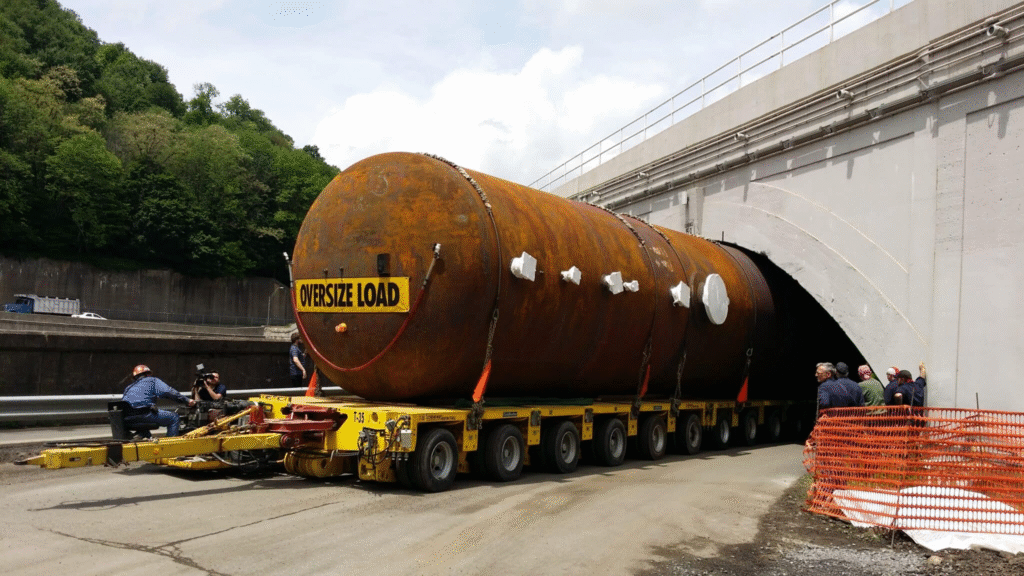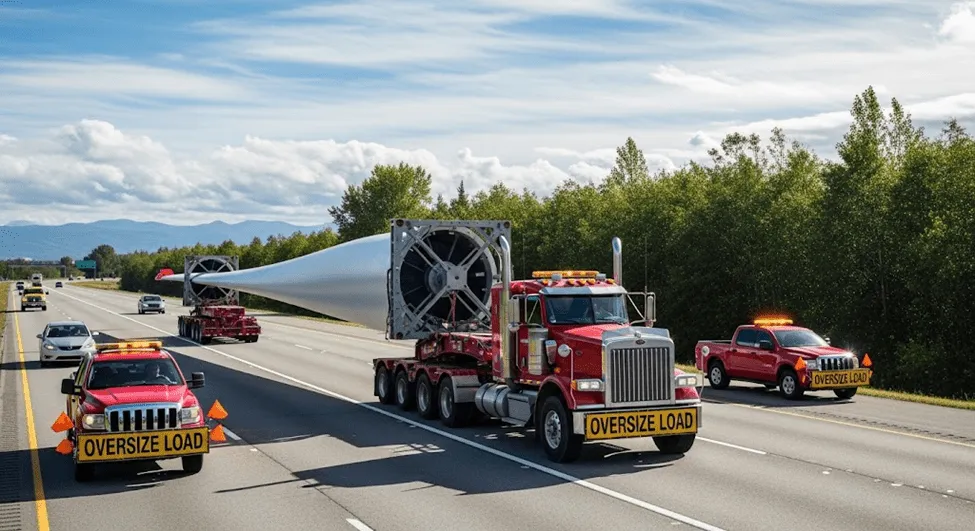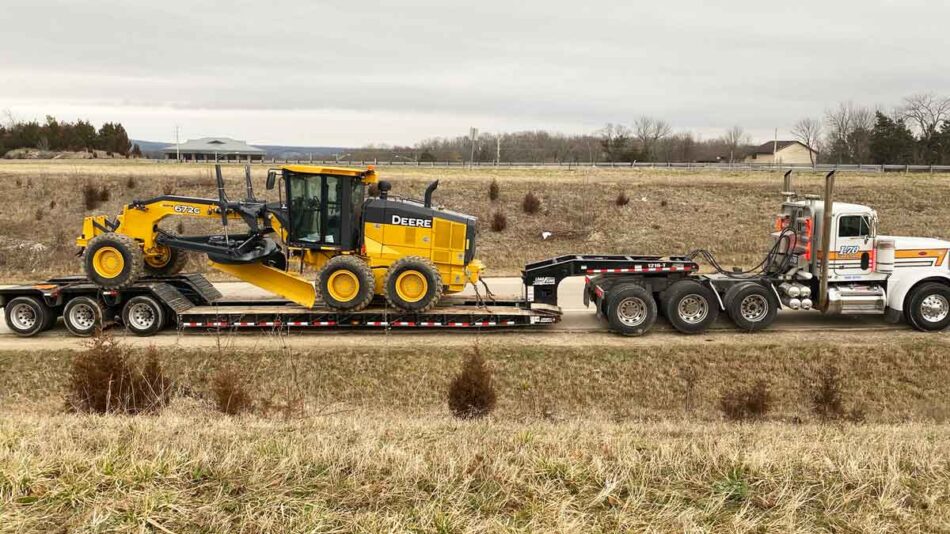The transportation of oversized or overweight loads plays an essential role in keeping industries supplied with the machinery and resources they need. Heavy hauling trucking requires specialized planning, equipment, and coordination to ensure loads reach their destinations safely. Within this sector, companies like Big M Transportation have adapted to evolving standards and demands, particularly when managing Heavy Hauling Equipment across regional and interstate routes. Despite the progress made in safety technology and logistics, challenges remain that affect efficiency, compliance, and long-term sustainability.
The Complexity of Oversized Load Management
One of the most significant aspects of heavy hauling is managing oversized loads. These shipments often exceed standard weight and dimension regulations, requiring specific permits and careful route planning. Navigating narrow roads, bridges with weight restrictions, and congested urban environments adds complexity to the process. Each trip becomes a carefully mapped project, where unexpected detours or delays can have ripple effects on deadlines and safety.

The Role of Regulations and Compliance
Regulatory requirements continue to pose major hurdles in heavy hauling operations. Transporting oversized loads requires strict adherence to state and federal guidelines. Rules vary depending on the jurisdiction, and what is permissible in one region may not apply in another. Compliance is not limited to obtaining permits; it also involves adhering to safety escort requirements, restricted travel hours, and environmental protections. This often leads to intricate coordination between carriers, regulators, and clients to ensure everything aligns before a shipment begins.
Equipment Demands and Maintenance
Modern heavy hauling relies on specialized trailers, hydraulic systems, and support vehicles that are built to handle extreme weight and size. However, the heavier and larger the cargo, the greater the strain placed on machinery. Frequent maintenance becomes critical to avoid unexpected breakdowns. Ensuring proper tire health, axle integrity, and hydraulic stability requires consistent inspections. The cost of downtime for equipment repair can impact schedules and client trust, making preventive maintenance a core aspect of operations.
Safety and Risk Management
Safety remains at the forefront of heavy hauling. Moving extremely large loads introduces hazards not commonly found in standard freight trucking. Risks include cargo shifts, balance issues, and mechanical strain during long hauls. Drivers and escort vehicles must remain highly alert to ensure safe passage for other motorists. Weather conditions, such as heavy rain, snow, or strong winds, further heighten these risks. Investing in training, communication systems, and real-time monitoring tools helps reduce accidents but cannot eliminate the inherent challenges.
Logistical Coordination in Heavy Hauling
Logistics plays an intricate role in oversized transportation. Coordinating multiple teams, escort vehicles, and law enforcement oversight is often necessary to move a single load. Route planning requires an understanding of road capacity, bridge clearance, and travel restrictions. Unexpected construction or infrastructure limitations can quickly derail a planned route, forcing quick adjustments. Logistics managers must constantly evaluate real-time conditions to prevent delays and avoid potential penalties for non-compliance.
Technology’s Role in Addressing Challenges
Technology has become a crucial factor in modernizing heavy hauling. GPS tracking, digital permit management, and advanced load-monitoring systems improve operational efficiency. These tools allow companies to anticipate road conditions, communicate with escort vehicles, and monitor cargo stability during transport. While technology reduces some traditional risks, it also introduces the need for ongoing training and investment. Drivers and managers must remain updated on emerging systems to maximize their benefits.
Workforce and Driver Expertise
Heavy hauling requires more than standard trucking experience. Drivers must be skilled in maneuvering oversized equipment, understanding load balance, and managing escort coordination. The shortage of qualified drivers in the trucking industry extends into heavy hauling, where expertise is even more specialized. Retaining skilled professionals requires ongoing training and creating a work environment that supports safety and precision. Without a strong workforce, even the most advanced equipment and planning can fall short.
Environmental Considerations in Heavy Hauling
Sustainability is increasingly influencing transportation industries, and heavy hauling is no exception. Moving oversized loads consumes significant fuel, leading to environmental concerns about emissions and efficiency. Companies are under pressure to adopt greener practices, such as optimizing routes, upgrading to fuel-efficient equipment, and exploring alternative power sources. Balancing environmental responsibility with operational demands adds another layer of complexity to heavy hauling operations.
Communication Across Teams
Smooth communication is vital in heavy hauling, where multiple teams work together on a single project. Dispatchers, drivers, escort vehicles, and regulatory agencies must coordinate effectively to prevent delays or safety incidents. Miscommunication can lead to incorrect routing, overlooked restrictions, or unsafe driving conditions. Companies increasingly rely on digital platforms that centralize updates and ensure every team member remains aligned throughout the journey.
Common Challenges Summarized
To better understand the difficulties faced in modern heavy hauling, the following points highlight key recurring issues:
- Navigating complex regulatory requirements across jurisdictions
- Managing oversized equipment and preventing breakdowns
- Ensuring driver expertise and workforce availability
- Balancing environmental responsibility with efficiency

Industry Adaptability and Future Outlook
Despite the challenges, the heavy hauling industry continues to adapt and innovate. Companies like Big M Transportation are integrating advanced logistics systems, developing driver training programs, and investing in reliable equipment. The future of heavy hauling will likely see greater emphasis on automation, alternative fuels, and advanced safety systems. By addressing today’s challenges with forward-thinking strategies, the industry positions itself to meet the growing demands of construction, manufacturing, and energy sectors.
Conclusion
Modern heavy hauling trucking is an essential component of industrial growth, yet it faces significant challenges tied to regulations, safety, logistics, equipment demands, and environmental responsibility. Companies that prioritize proactive planning, training, and investment in technology are better prepared to overcome these obstacles. While the industry continues to evolve, the commitment to safety, efficiency, and adaptability ensures oversized loads reach their destinations securely and responsibly.
FAQs
What makes heavy hauling different from standard trucking?
Heavy hauling involves transporting oversized or overweight loads that exceed legal limits for regular trucks, requiring special equipment, permits, and planning.
Why is route planning important in heavy hauling?
Route planning ensures oversized loads avoid restricted bridges, low clearances, and weight-limited roads, reducing risks and delays.
How does technology improve heavy hauling operations?
Technology enables real-time tracking, digital permits, and cargo monitoring, helping companies manage loads more safely and efficiently.
What skills are essential for heavy hauling drivers?
Drivers need advanced maneuvering abilities, knowledge of load distribution, and experience working with escort vehicles and regulations.
How is the heavy hauling industry addressing environmental concerns?
Companies are exploring more fuel-efficient equipment, optimizing routes, and investing in greener practices to reduce environmental impact.








